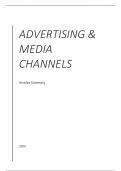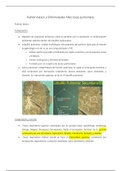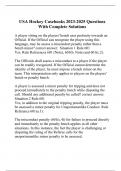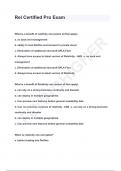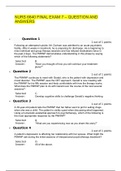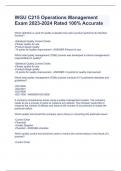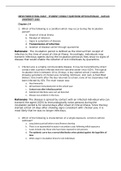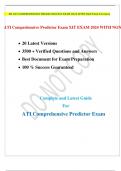Samenvatting
Advertising & Media Channels - Article Summary 2024 (MSC Marketing)
This document contains a summary of all the required readings for Advertising and Media Channels, a course part of MSc Marketing at VU Amsterdam. Do not get intimidated by the page count, I start every article on a new page for readability. So there are quite some white spaces :) I also include...
[Meer zien]
